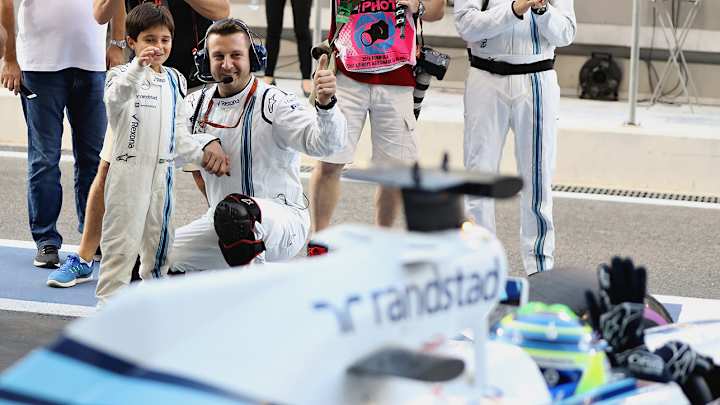How Williams Martini Racing became the fastest pit crew in F1

Read about the latest sports tech news, innovations, ideas and products that impact players, fans and the sports industry at SportTechie.com.
During the last three years, the Williams Martini Racing F1 team has shaved more than a second off its pit-stop time, going from worst to best, so much so that it recently clocked in at 1.92, the fastest in 2016.
How did the team drastically cut its pit time down?
It started by recently hiring human performance specialist Gemma Fisher and combining her insight with new biometric technology from Avanade, a joint venture between Accenture and Microsoft, which Williams F1 began working with in 2014. According to Claire Williams, deputy team principal and commercial director, the last 18 months have been key as Williams invests in “new technologies that will help keep us at the cutting edge of motorsport and advanced engineering.”
The multi-year technology and sponsorship partnership for Williams Martini Racing meant that the team could receive more informed intelligence about how its pit-crew members were performing across those few crucial seconds.

Subscribe to the
SportTechie Newsletter
- Student journalists discuss future of sports media
- Super Bowl LI has an official WiFi partner
- Wilson releases its smart football in Europe
Initially, four members of the 22-person pit crew wore bio harnesses to track their heart rate, temperature, breathing rate and peak acceleration. Data was collected and sent to a Microsoft-powered cloud solution (Azure) and then transmitted through a suite of Microsoft’s business analytics tools in addition to Avanade’s Biometrics Analytics Dashboard. In short, Williams F1 could better analyze team members’ physical conditions, what heart rate zones they worked best in and what triggered rises in stress levels.
“We could see that when we’ve had good pit-stops the data looks quite similar,” said Graeme Hackland, the team’s IT Hackland to Alphr.com. “And when we’ve had a slow pitstop or something’s gone wrong, you can see that the data is all over the place, there are lots of spikes and everything.”
Along with the physiological assessment, Fisher and Hackland wove in the use of video analysis—specifically three cameras—to fully analyze the entire pit stop. Hackland said that he could soon see everyone and everything being monitored—from the car to manufacturers to designers and yes, the pit crew.
“We’ve got 300 sensors on the car, we’ve got 1,000 channels of data, and before this year zero on the humans,” he said. “And they’re at least 50 percent of your performance.
“Are the designers really fatigued? If they’re fatigued, they won’t be producing the most creative drawings. So, I can see this over the next few years really expanding to more and more people.”
Despite recent use of video and biometrics, Williams still wants to integrate wearable technology and GPS sensors into its overall operation.
“We are looking at putting GPS data on the humans, everyone who is on that pitstop, the 22 people,” Hackland said. “What we want to get to is that everyone in the pit crew knows that so they can adjust before the car even stops, based on GPS.”
